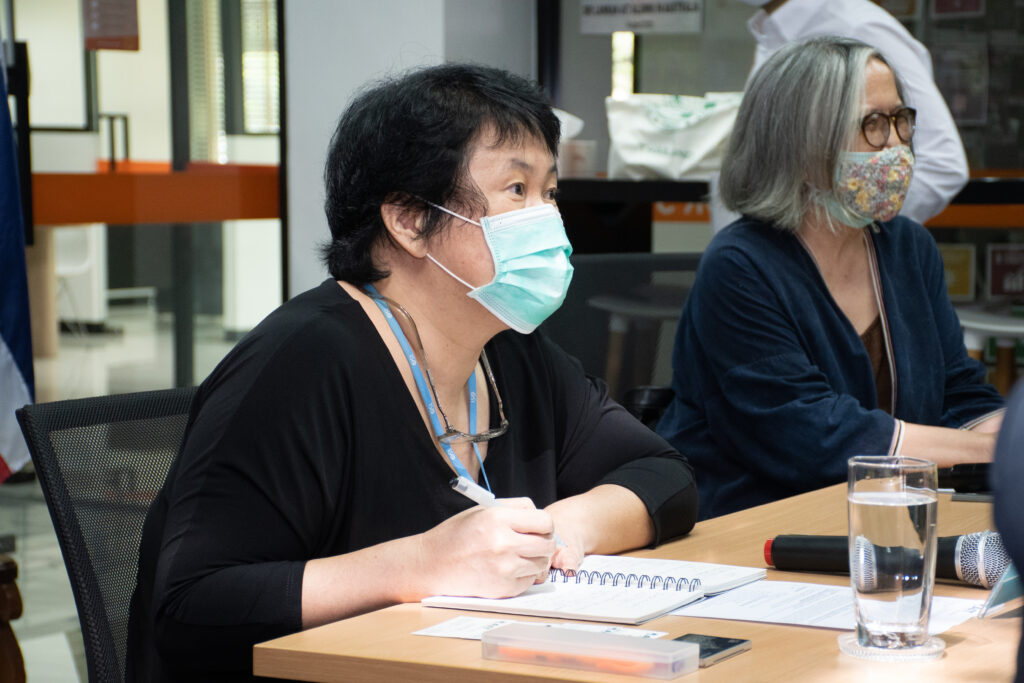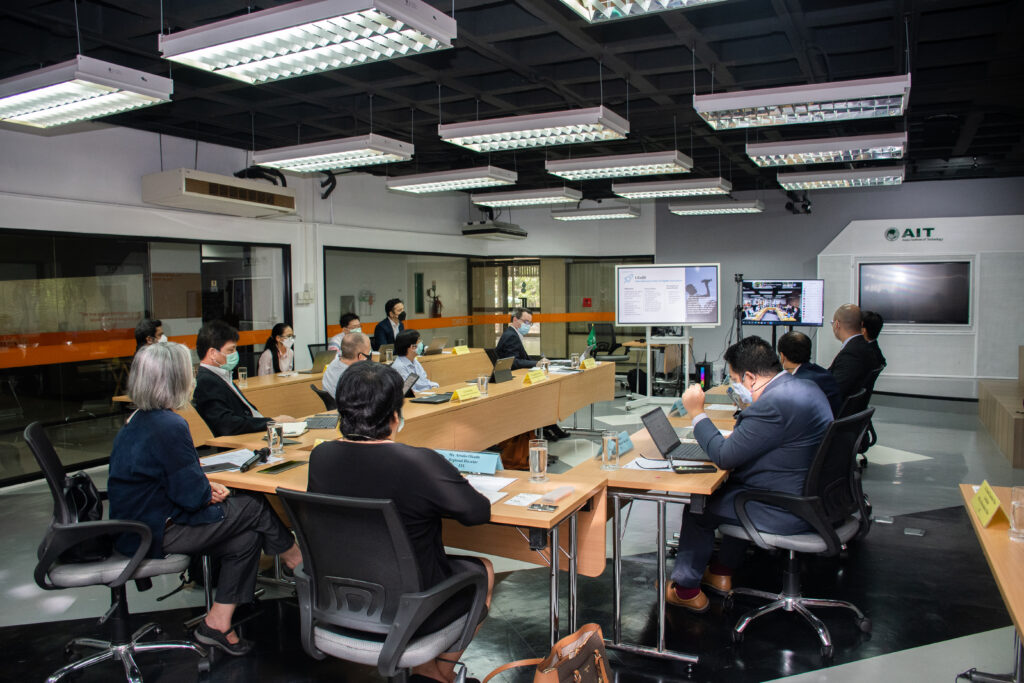By Nitipol Kiravanich
October 22nd, 2021 — The Asian Institute of Technology (AIT) and the International Telecommunication Union (ITU) of the United Nations discussed a possible collaboration on social and technological development with an aim to eradicate digital divide together with accelerating the achievement of the Sustainable Development Goals (SDGs) via a hybrid seminar titled ‘Digital Infrastructure Development’, held online and on AIT campus.
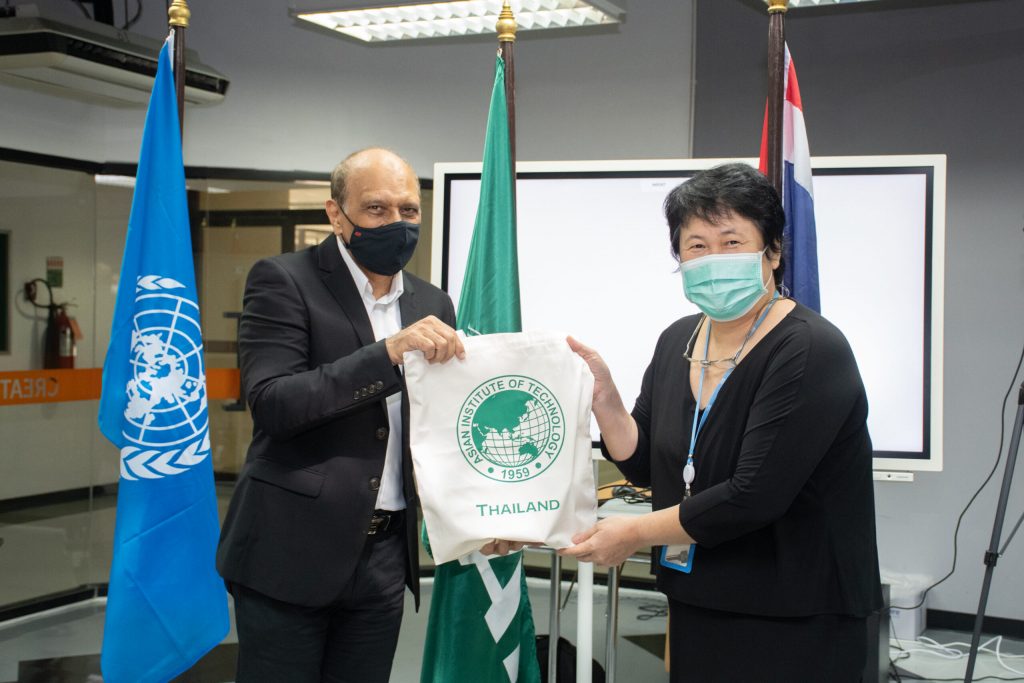
The institute welcomed ITU Regional Director Ms. Atsuko Okuda, Senior United Nations (UN) Coordination Specialist Mr. Rior Santos, and other ITU delegates to join the hybrid seminar on campus. Former Director, Chairperson and Research Professor of the AIT Internet Education and Research Laboratory (intERLab), Professor Kanchana Kanchanasut, also joined the event on site, together with Dean of School of Environment, Resources and Development (SERD) Professor Vilas Nitivattananon, and members of staff from the Office of International Affairs. AIT President Dr. Eden Woon participated to deliver opening remarks online.

President Woon welcomed ITU delegates, stressing that for many decades the ITU and AIT have shared the same mission of supporting the Asian-Pacific region in advancing social and technological development and education – noting that “AIT is extremely pleased that we have the opportunity to establish cooperation with you all for the benefit of this region, in particular, to work together to accelerate the achievement of the Sustainable Development Goals.”
In his remarks, President Woon highlighted AIT’s contribution to internet education exemplified by the “Mother of the Internet in Thailand” former AIT Vice President of Research Kanchana Kanchanasut pioneering the electronic mail and internet in Thailand with the registered “.[dot]th” domain. She was inducted into the global Internet Hall of Fame by the Geneva, Switzerland, based Internet Society. Since June 1988, AIT has been contributing to tightening the gap of the digital divide in Thailand.
The seminar was marked as the first official meeting between AIT and ITU, where the two institutions shared visions and goals of addressing the digital divide. Prof. Kanchanasut who bridged the two pointed to the changes in internet issues that need to be addressed -- in the past, it was the matter of connecting the unconnected people, in this era, however, it is the matter of accessing advanced technology. “It is time to integrate everyone into the movement,” said the “Mother of the Internet in Thailand”.
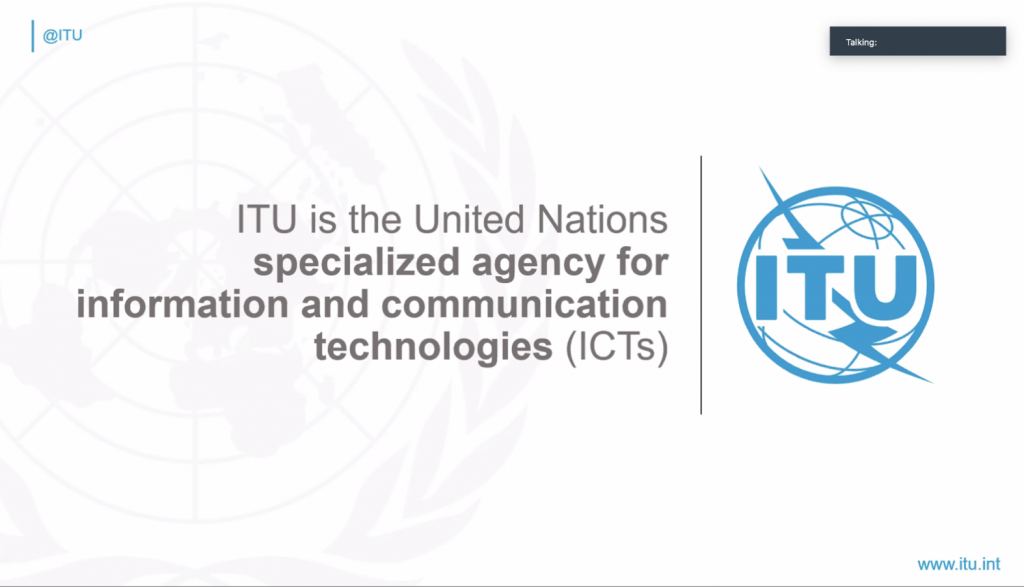
ITU Regional Director of Asia and the Pacific, Ms. Atsuko Okuda, also former Chief of the ICT and Disaster Risk Reduction Division of the United Nations Economic and Social Commission for Asia and the Pacific (ESCAP), said in response to the notion of possible collaboration that “we are extremely happy to discuss future collaborations and what we can do together.”
The ITU Regional Director further emphasized the cruciality of the future collaboration between ITU and AIT as Asian-Pacific countries are suffering from the Coronavirus Disease (COVID-19) pandemic, in which digital technology can contribute to economic and societal recovery; accelerate SDGs by 2030; and prepare member countries and society for digital future.

Furthermore, Ms. Okuda stressed that ITU is committed to connecting the world with the ultimate goals of making technologies equitable with affordable access, as well as strengthening capacities in the developing and least developed countries to attain the advanced technologies in accordance with the SDGs.
The ITU Regional Director also provided examples of what ITU does under its Regional Initiatives for Asia and the Pacific, which include addressing and providing special needs in telecommunication/ ICT requirements; harnessing ICTs to support the digital economy for an inclusive digital society; fostering the development of infrastructure to enhance digital connectivity; enabling policy and regulatory environments, and secure and resilient environment.
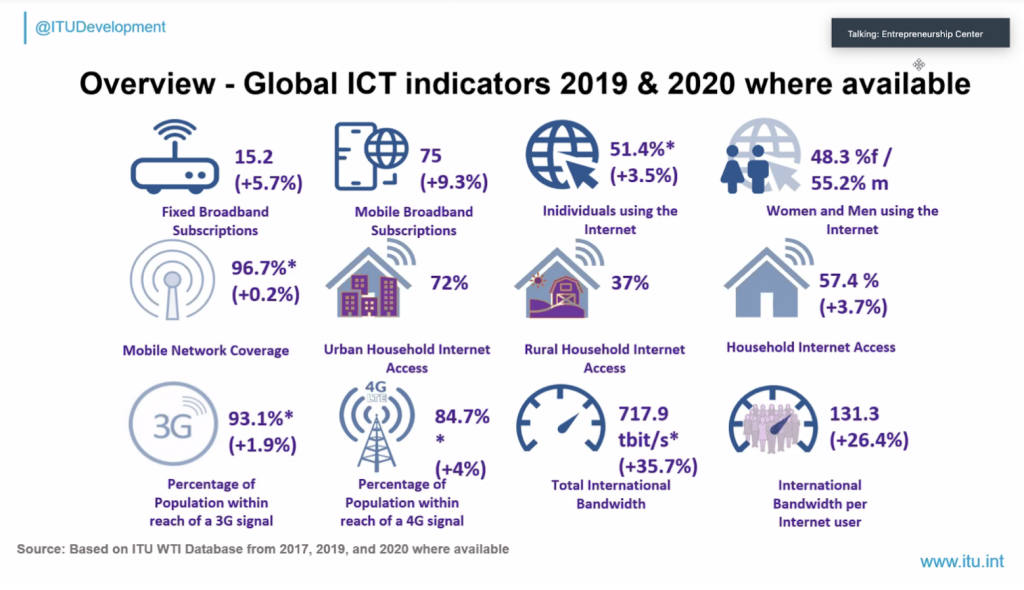
However, it cannot be neglected and denied that the pandemic has a vital implication on technologies. ITU reflected on 2019 and 2020 global ICT indicators as digital platforms shifted overnight in terms of coverage, usage, and subscriber – most things have to be done online for health safety and this has widened digital divide. In this regard, ITU delegates Mr. Ashish Narayan, Programme Coordinator, and Mr. Rior Santos, Senior UN Coordination Specialist, have shed light on the important initiatives ITU took through satellite connectivity project, digital government, digital agriculture, and smart islands – to address the gap.
With education being one of the fundamental factors in achieving SDGs and tackling the digital divide, ITU Programme Administrator Mr. Calvin Chan demonstrated special initiatives conducted with the United Nations International Children's Emergency Fund (UNICEF) called ‘Giga’ aimed to connect 500 million learners globally to the internet by 2030 with the tagline of “Connecting Every School to the Internet”
Meanwhile, AIT Dean of SERD Professor Vilas Nitivattananon presented ‘Smart City and Sustainable Development’ signifying how AIT advocated to SDGs and attempted to bridge the digital divide. Prof. Nitivattananon illustrated that AIT addressed such matter through its five thematic areas: Climate Change; Smart communities; Food, Energy and Water; and Technology, Policy and Society. Whereas, sustainable development for AIT is portrayed as five pillars of ‘Planet’, ‘People’, ‘Prosperity’, ‘Peace’ and ‘Partnership’.
AIT intERLab member Ms. Nisarat Tansakul also shared the project led by Prof. Kanchanasut in Tak Province of Thailand, titled ‘TakNet’, conducted to enhance community network and establish community platform in attempt to tighten the gap of digital divide for the individuals in rural area.
From this first official meeting and a Joint Seminar on “Digital Infrastructure Development’, the two organizations reiterated a shared vision of enriching Asia-Pacific's technological infrastructure with the commitment to push for a flourishing digitization future under the mission of bridging the digital divide and achieving the SDGs within 2030.



